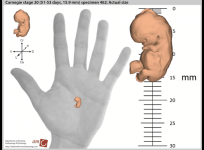
Companies


Lufthansa cancels 35 flights on Sunday as pilots' strike enters fifth day

Tata Steel removes Cyrus Mistry as chairman, appoints O P Bhat as interim head

SpiceJet Q2 net profit doubles on higher operating revenues

Demonetisation: Paytm admits to goof-up in app, promises to rectify

Air India Chief slams DGCA's proposal of punishing sick pilots

Crossrail protest held outside company HQ in Londons Canary Wharf

Former Unilever COO Harish Manwani may succeed Cyrus Mistry as Tata Sons chairman

Don't project me as poster boy of non-performing assets: Vijay Mallya

Watch human embryo development on interactive map

Why single out Ranveer Singh when we keep mum on scores of other sexist ads?

Food comas have been scientifically proven a real phenomenon

Travel site Ctrip acquires Skyscanner for $1.7 billion

Vistara joins SpiceJet to offer discounted air tickets

Demonetisation: Media, multiplexes, films will suffer, says IDBI Capital Markets
Advertisement
Advertisement













